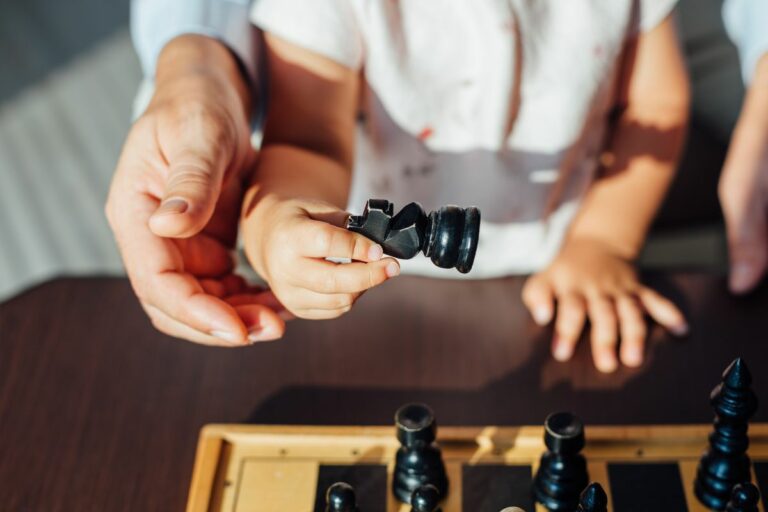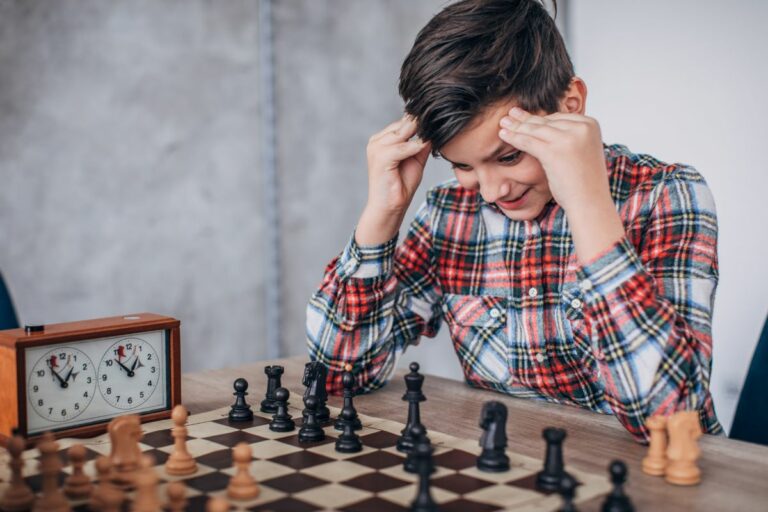Why Do Chess Players Put The Kings in the Middle After the Game?
The chessboard is often referred to as a battlefield, and the ultimate objective for each player is to capture the opponent’s king. When one player successfully achieves this, the game comes to an end.
Perhaps you’ve noticed chess players placing their valuable kings in the middle of the chessboard at the conclusion of the game, leaving you wondering about the reason behind this choice.
So, why do chess players put the kings in the middle of the board after the game?
Players position the kings in the middle to communicate the final game outcome. If both kings are on white squares, it means a victory for white; if both kings are on black squares, it means a victory for black; and if the kings are on squares of different colors, it means a draw.
Keep reading to learn more about how you can indicate different results by positioning the two kings on the board and how this tradition started.
Why Do Chess Players Put The Kings in the Middle of the Board?

During tournaments that utilize digital chessboards (DGTs), players position the kings in the middle after the game to indicate a distinct outcome—be it a draw, win, or loss. However, this tradition is not exclusive to games that use digital chessboards, as it predates the digital era and is observed in both physical and digital formats of chess.
How Do Digital Chessboards Work?
A digital chessboard (DGT) is a computer-connected chessboard equipped with sensors that record piece movements during adjustments made by players. These sensors collect data, which is then transmitted to software programs, generating output that allows viewers to visualize and analyze the chessboard position.
Due to their cost, DGTs are not employed in every tournament. However, they are indispensable for high-level competitions that attract a global audience. Streaming platforms like Chess24 depend on DGTs and live feeds from tournaments to facilitate widespread viewership.
The live streaming of chess games plays a pivotal role in the game’s popularity, prompting chess arbiters and organizers to adopt DGTs as a standard.
Greater viewership translates to increased sponsorship opportunities, a crucial aspect in a sport like chess, where top players are not extensively compensated, as discussed in my post on chess player earnings.
The Best Digital Chessboard You Can Get

This is an evolutionary Digital Electronic Chess Set that combines elegance, adaptability, and intelligence, creating the perfect companion for players of all skill levels

Experience the future of chess with Square Off, an innovative and rechargeable chessboard that uses AI-powered automation, allowing you to play against virtual opponents or challenge friends from anywhere in the world
DGTs used to be super expensive and hard to find a few years ago, but now they’re more affordable, and you can easily get them online from Amazon.
If you’re serious about improving your chess game, having your own DGT is a must-have. Here are the top three models that I highly recommend:
- ChessGenius Electronic Chess Board Set: This set features a sleek and durable electronic chessboard with integrated LED lights and a convenient display for input on moves and piece positions. With advanced AI capabilities, it offers a challenging opponent and various skill levels to cater to players’ preferences.
- DGT Centaur Chess Board Set: This set features sensor-equipped squares that detect and register moves, providing an interactive and intuitive playing experience. With its built-in AI, the Centaur offers adaptive gameplay suitable for both beginners and experienced players.
- Square Off Pro Portable Roll-Up Smart Chess Board Set: This set offers a unique experience, allowing you to play against AI opponents or challenge friends remotely. The chessboard’s automated movement and intuitive app integration make it convenient and captivating.
How to Position the Kings to Indicate Different Results

Before we get into the different scenarios for positioning the kings in the middle of the chessboard, it’s crucial to understand how to locate the middle and identify each square.
The central squares of a chessboard, namely e4, d4, e5, and d5, can be categorized as light or dark squares. Among them, e4 and d5 are light squares, while d4 and e5 are dark squares.
Now let’s explore what positioning kings in different scenarios means:
- White Wins: To indicate a victory for white, both kings are positioned on the white-colored squares in the middle of the chessboard, which are e4 and d5.
- Black Wins: To indicate a victory for black, the two kings are positioned on the dark-colored squares in the middle of the chessboard, which are d4 and e5.
- Draw: To indicate a draw, players position the kings facing each other on opposite-colored squared, with one king on a light-colored square and the other on a dark-colored square.
Additionally, if a chess player decides to resign, they can shake hands with their opponent and place their king in the middle of the board as a sign of conceding the game.
When Did Chess Players Start Positioning The Kings in the Middle of the Board?
The origins of positioning the kings in the middle have sparked debates, with some attributing it to the advent of digital chessboards.
However, my recollection of witnessing this practice in tournaments from 2012 and 2013, prior to the popularity of chessboards and even in older photographs from the 60s and 70s, suggests a deeper historical tradition.
It seems likely that this custom emerged to inform spectators and fellow players about game outcomes without relying on arbiters or waiting for the next tournament.
In the past, people attended chess tournaments to observe the games, predating live streaming and television. Placing the kings in the middle made it convenient for those who missed the final moments to grasp the game’s conclusion quickly.
Today, the practice has become mandatory due to the presence of electronic sensors in DGT boards, which track piece movements and relay them to viewers for analysis and observation.
Whether using digital or non-digital boards, the kings are positioned on the central squares by players or tournament officials to indicate the game’s final result. This enduring custom remains relevant in both large and small chess tournaments, allowing the audience to grasp the outcome even after the players have left the board.
Who Should Position the Kings in the Middle: Chess Players or Arbiters?
Positioning the king in the middle to indicate the match result can be done by either the chess player or the arbiter. However, following proper etiquette, it is customary for the players to position the kings accordingly.
In the event that you forget to position the kings in the middle after a game, rest assured that an arbiter is always available to assist you. They can graciously take charge of positioning the kings or lend a hand to ensure both you and your opponent accurately position your kings.
Conclusion
In conclusion, the tradition of placing the kings in the middle of the chessboard holds both historical significance and practical value in the world of chess.
While its origins may be debated, it is clear that this custom predates the rise of digital chessboards and continues to be observed today, even in non-digital tournaments.
The placement of kings serves as a visual representation of the game’s outcome, allowing spectators and fellow players to easily discern the result without relying on external sources or waiting for official announcements.
If you did find this article helpful, please consider sharing, as it can help this little site grow 🙏








